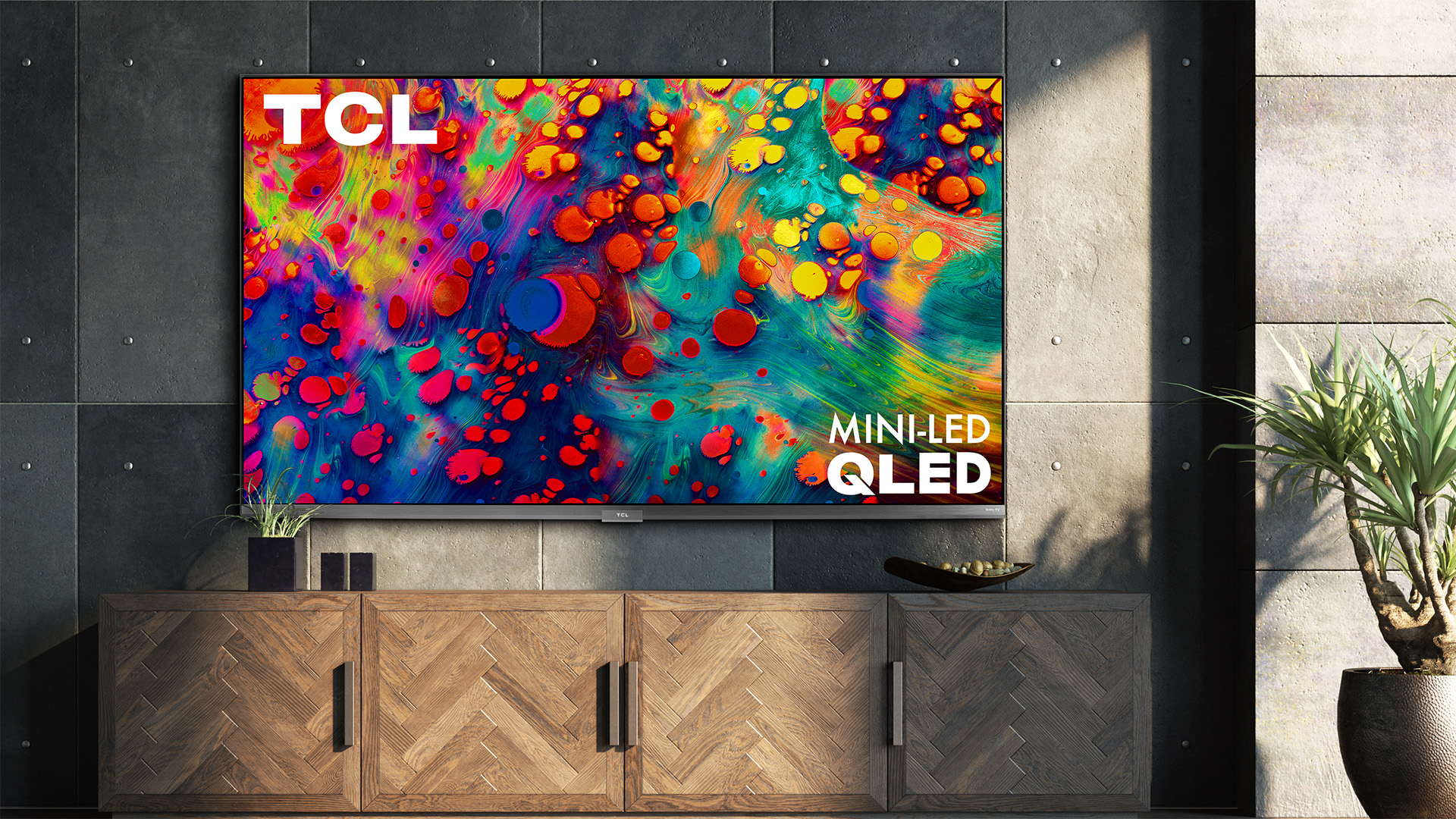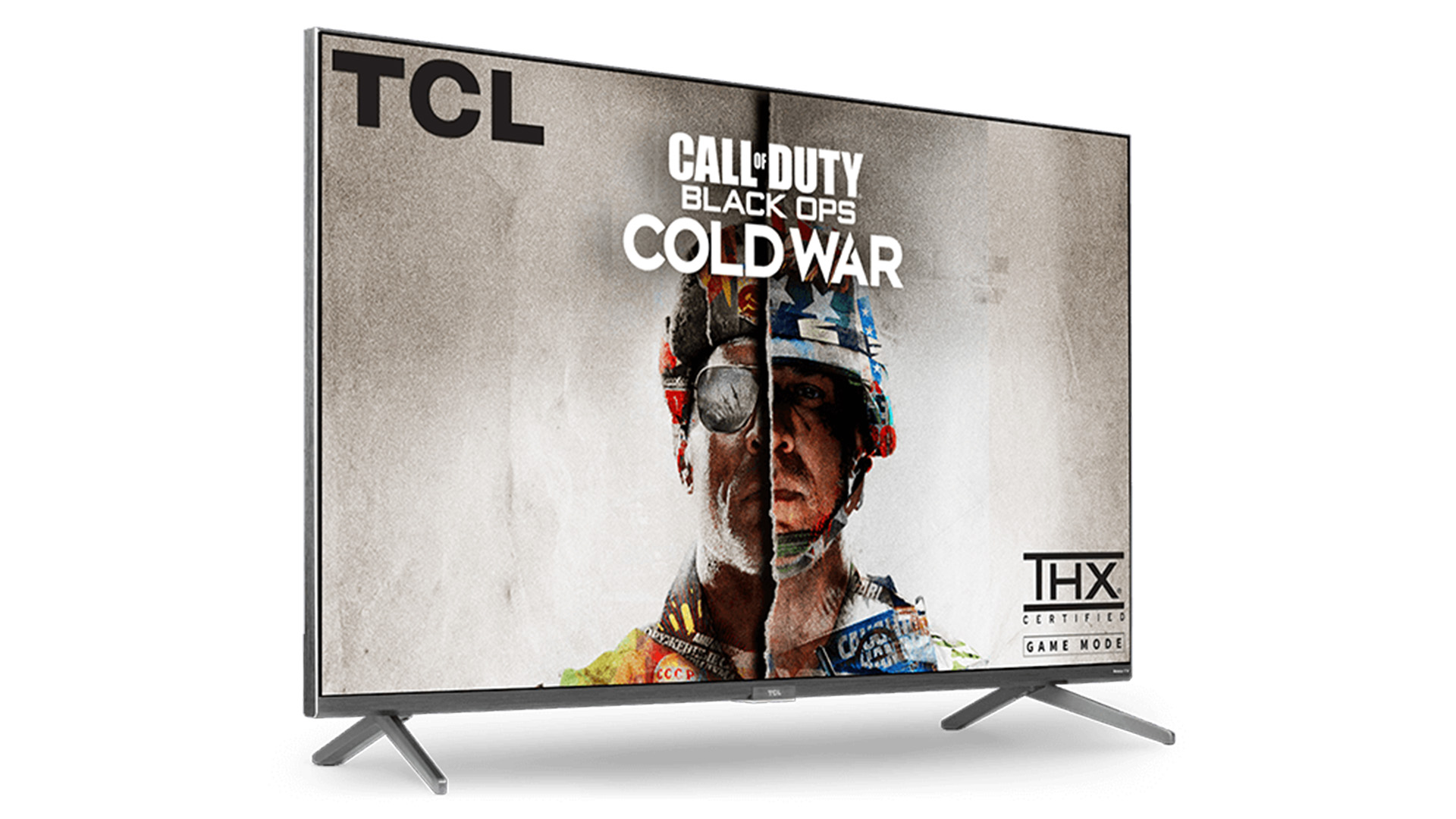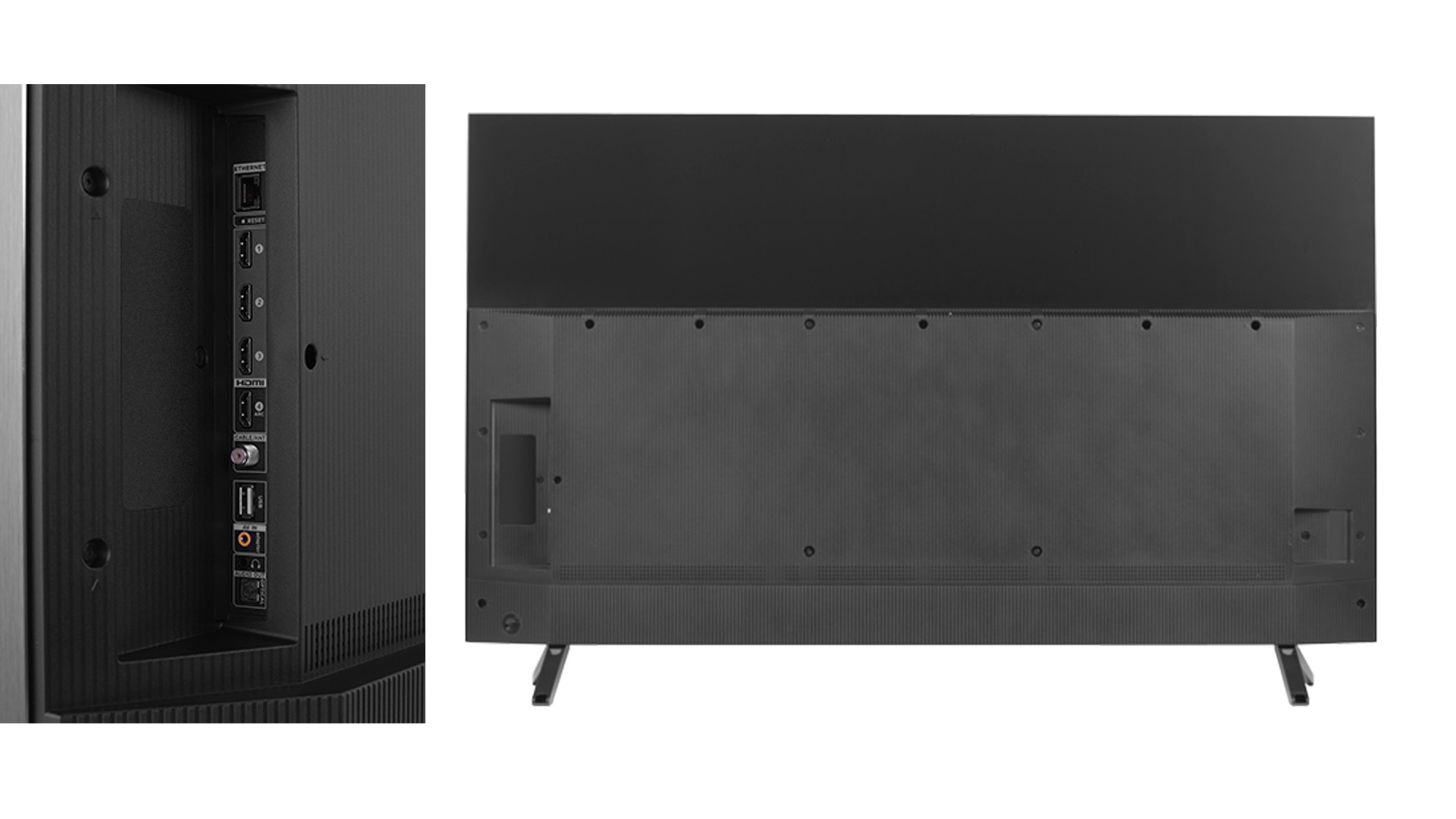TCL 6-series 55R635 Roku TV (2020) review: a quality picture for cost-conscious buyers
Amid rising prices, the TCL 6-series Roku TV remains a solid 4K TV for a bargain price


If you're looking for a solid quality 4K picture but don't have an infinite budget, the TCL 6-Series is an excellent choice in a crowded market that's now experiencing price increases.
-
+
Very well qualified 4K picture
-
+
Easy yet smart Roku TV interface
-
+
Competitive price
-
-
Less than ideal sound
Why you can trust T3

It is not your imagination. After falling for decades, TV prices have been going up, thanks to a shortage of chips and disrupted supply chains due to the global pandemic. But there are still some sets that represent a good value, such as the TCL 6-Series that makes a challenge for the best TV under $1000.
I’m reviewing the 55-inch version of the TCL 6-Series Roku TV. It boasts some of the latest display technologies – including quantum dot film and mini-LED backlighting – to boost color reproduction and improve picture contrast. It also possesses all the necessary features to make it the centerpiece of your home theater, including a couple of great features for gamers, without busting your budget.
TCL 6-Series Review: Price and Features
The TCL 6-Series is considered to be a mid-level 4K TV. It's not the least expensive 55-inch model you'll find available, which can dip down as low as $400, but it's also far from the most expensive, which can top $1,800 for an OLED set with all the trimmings. Currently, the 55-inch TCL 6-Series Roku TV is running about $899 at retail. That's a substantial value given its well-rounded set of features. (It also comes in a 65-inch version for $1,300 and a 75-inch size for $1,700 retail.)
The TCL 6-Series is a quantum dot set, which means its LCD screen has an added film layer to give it a wider array of displayable colors. It's also got more individual LEDs to light up the image from behind, a so-called mini-LED design (not to be confused with cutting-edge micro-LED sets in which each pixel is its own LED backlight). The 55-inch TCL 6-Series has 128 separate backlighting zones composed of hundreds of mini-LEDs, giving it more precision to brighten one portion of the screen, while simultaneously dipping into another into darkness. (The 65 and 75-inch models of the 6-Series offer up to 240 zones and 1,000 mini-LEDs.)
The TCL 6-Series also supports all the key 4K display formats, including a 120 Hz refresh rate (to reduce jitter and improve image clarity) and high dynamic range (HDR) Dolby Vision, HDR10 and HLG support for streaming and broadcast programs that have HDR. To connect to all that 4K content, there are 4 HDMI ports, one of which is eARC compatible, meaning that it will automatically sync with a compatible soundbar or surround sound receiver. There's a coaxial connection for an antenna, a 3.5 mm audio output, a USB port, digital audio output, and an AV output for legacy equipment, such as a laserdisc player or VCR, should you still have one kicking around. For today's streaming services, there's an Ethernet port or more commonly used Wi-Fi 802.11ac to make the wireless connection.

TCL 6-Series Review: Picture Performance
As usual, I found the set's normal picture mode too bright and too likely to bloom (or blur) some highly color saturated areas. For my time with the set I found movie mode was much more precise and realistic in appearance and stuck with it for most of the testing period.
The TCL 6-Series revealed itself to be a capable 4K TV. It did well producing colors, whether it was a muted, foggy scene or an iridescent, out-of-this-world sci-fi extravaganza. The set did an admirable job, for example, handling the florid excesses of Guardians of the Galaxy (even when upscaled) as well as the patriotic hues of Wonder Woman 1984. In fact, the set did well reproducing the standard color gamut hitting 99.92 percent of the RGB color space.
Get all the latest news, reviews, deals and buying guides on gorgeous tech, home and active products from the T3 experts
The TCL 6-Series also easily handled tricky-to-reproduce shadows that are the hallmarks of dark series such as the Batman and Harry Potter movie franchises. The TCL 6-Series managed to retain details in dim corners without washing out the whole picture, for example. And the TV set demonstrated consistent screen uniformity, meaning that when showing a single solid color across the entire screen there were no irregular bright or dim spots.
For all of its strengths, the TCL 6-Series mini-LED set is not perfect. I did detect, for example, some irregular banding in what should have been smooth color transitions in the grey skies of the 4K Blade Runner 2049 movie. I also noted some haloing in which a bright object elicits rings of light around itself against a dark background. Colors also weren't quite as accurate as we'd like to see, with a Delta E score of 2.8; closer to 2 is better.
These were not deal-breaking issues and, granted, I was looking specifically for such imperfections. But such details are what separates mid-level sets like the TCL 6-Series from more expensive OLED TVs.
It should also be noted that the TCL 6-Series does afford some very decent viewing angles. Sitting off to the side (away from the ideal center viewing position) did not wash out the picture as it does so often on lesser LCD TVs. It doesn't match the extreme angles offered by OLED sets, but it's good enough to ensure that if you're stuck on the end of the couch, you won't miss all the brilliant colors and pyrotechnics of the latest blockbuster.
Finally, avid gamers may want to consider the TCL 6-Series set. According to the company, it was the first set to receive a THX Certified Game Mode designation. In that mode, the TCL 6-Series kills the video processing that often slows gaming performance and meets other criteria to keep pace with fast action games. The set also has an Auto-Low Latency Mode feature that means it will automatically switch to game mode whenever a connected console is turned on.

TCL 6-Series Review: Sound Quality
For all its advantages, the TCL 6-Series doesn't focus much on audio quality. The built-in sound system is a modest 2 x 8-watt design. It does support the Dolby Atmos format, which is supposed to produce a 3D-like immersive sound experience. But you won't find that here, unless you connect a compatible soundbar or surround sound system.
Furthermore, if you're looking for window-rattling sound pressure levels, you're not going to get it out of the TCL 6-Series set. Volume levels are certainly sufficient to fill the average living room or den, however.

TCL 6-Series Review: Design and Usability
The physical design of the TCL 6-Series follows current conventions. It is about average thickness for a set this size, coming in at 2.8 inches to accommodate all the electronics and inputs on its backside.
The black and brushed metal chassis is unobtrusive and for table-top placement there are two splayed feet that attach at either end of the screen. A nice design touch is that the left and right feet only attach one way, so you can't mix them up and put the set off kilter. Of course, if you want to do a wall mounting, that's possible using any 300 mm by 300 mm VESA mount.
Usability of the TCL 6-Series is enhanced by the Roku interface. Its tile graphic design groups everything, input video sources and streaming services alike, into one simple interface. It also boasts possibly the one of the widest arrays of streaming programming (which Roku calls channels). There are all the principal players, such as Netflix, Amazon Prime, and even the Criterion Channel for movie lovers. Roku has of late been squabbling with the likes of cable operator Spectrum and Google's YouTube TV, which has led to those apps being dropped, but we hope those spats are resolved soon.
One point of differentiation here is that the Roku TV interface includes voice search with a microphone built right into the remote control. It's extremely useful for finding a show or movie among the multitude of sources available. However, to use a smart assistant like Amazon Alexa or Google Assistant, you need to route those functions through your own smart speaker; it's not built in.
TCL 6 Series Review: Verdict
As prices rise, it's getting more difficult to find a quality 4K TV for a bargain price. The 55-inch TCL 6-Series is a very notable exception. It delivers respectable picture performance and has the requisite 4K features, including Dolby Vision support, which gives movies supporting the format more intense colors and contrast. Gamers will also appreciate the TV's 120-Hz variable refresh rate, which means it can take advantage of the 4K features on the latest titles for the PlayStation 5 and Xbox Series X consoles.
TCL 6-Series Review: Also Consider
TCL is planning on introducing an 8K version of the 6-Series, but exact debut dates and prices aren't available yet. However, if you are looking for the latest-and-greatest in TV display technology, you may be tempted to delay your purchase until that model comes out.
Otherwise, shoppers may want to compare the TCL 6-Series against its nearest competitor, the Vizio M-Series. The M-Series which doesn't have all the skills of the TCL model (such as the 120 Hz display rate) but it delivers a big, bright picture and costs about $150 less.
At the other end of the market there are a welter of sets with the same basic technology but which cost significantly more. For example, the Samsung QN85A also uses a quantum dot layer and a mini-LED backlighting system but costs nearly $1,400 for the 55-inch model. Granted, the Samsung set has many more active zones that can be brightened or dimmed for better contrast but compared to the TCL 6-Series' price of around $850 it looks profligate.
John R. Quain has covered science and technology for more than two decades. In addition to being a contributor at T3, he is a contributing editor at Tom's Guide, a regular contributor to The New York Times and the weekly tech guru for WTVN. His articles have appeared in Car & Driver, Esquire, Fast Company, Rolling Stone, and U.S. News & World Report, as well as numerous technology publications. Quain was the recipient of a Paris Accords of Science Communication fellowship in 2019. He regularly speaks about issues relating to autonomous vehicles and is the Editor-in-Chief of OntheRoadtoAutonomy.com. You can follow him on Twitter @jqontech
